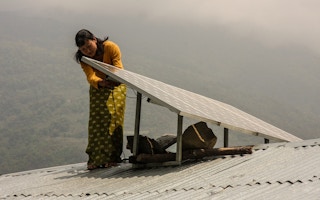The efficiency of solar power cells and declining price of storage batteries means it has become possible for isolated villages and whole islands to generate their own electricity off-grid.
Indeed, in the aftermath of the two hurricanes that struck Puerto Rico, Elon Musk tweeted that independent solar power linked to batteries could rebuild that island’s entire electricity system.
Across Asia and in other parts of the developing world, many villages still lack an adequate and reliable supply of electricity. Often governments cannot afford to help every isolated community and banks are reluctant to lend.
ADB Institute Dean Naoyuki Yoshino and Farhad Taghizadeh–Hesary of Keio University have proposed local communities might be able to put together enough seed money to jumpstart a village-level energy project to improve their living standards and productivity.
Modest savings from villagers themselves, sometimes matched with domestic and overseas crowdfunding through the internet, and topped up with money raised using ADB’s new Green Finance Catalyzing Facility or other global green funds can be put into a special hometown investment trust to fund renewable power systems.
Solar panels, wind turbines, and micro hydro are small-scale, cheap, clean and do not damage the environment or relocate villagers. Power can be stored using efficient batteries to assure a steady supply of electricity.
When the local energy project is completed, villagers can use the electricity to empower their lives and introduce modern conveniences such as air-conditioned health clinics and well-equipped schools.
It might also be possible for villagers to sell any excess supply to the national power company or a nearby factory to earn a profit.
Watch how these innovative funds for renewable energy have already worked in Japan, Germany, and could in other developing countries. Follow more smart ideas to use green finance, clean energy, and solar power with Dean Yoshino and Sohail Hasnie.
This blog was first published on Asia Pathways.
Grant has been ADBI’s legal advisor for most of the Institute’s existence except for a mid-career sabbatical at the Geneva Institute of International and Development Studies. He has worked as a Wall Street lawyer and for the UN and OECD.
This piece was republished with permission from the ADB.









